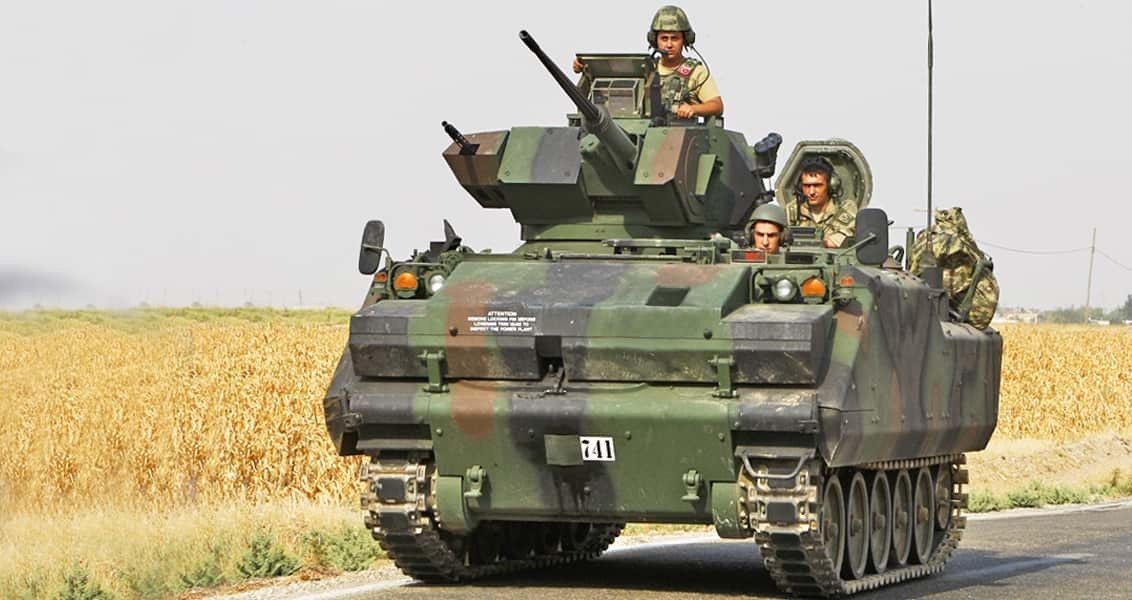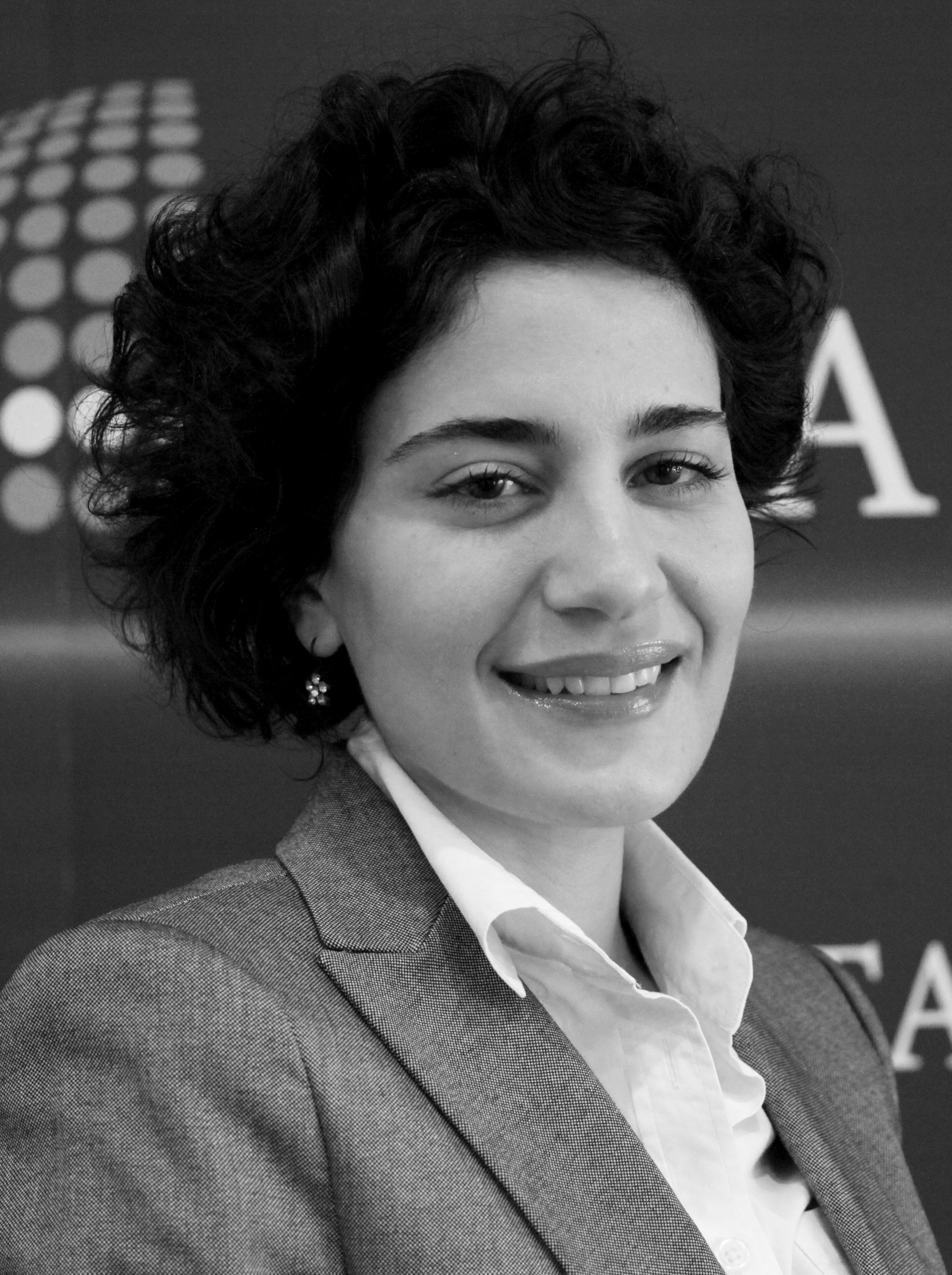We need to first look at why and how Ankara decided to carry out Operation Euphrates Shield through its own military capabilities.
In order to answer this question, we must first refer to Turkey’s threat perception at that time. Prior to Operation Euphrates Shield, the National Security Council’s (MGK) advisory decision pointed out the level of threat posed by Daesh (or ISIS/ISIL), the terrorist PKK and the PKK’s Syrian offshoot, the PYD/YPG, along Turkey’s borders.
These terrorist groups increased the risk of simultaneous attacks launched from the Syrian side of the border but organized in Turkish territory.
The emergence of new threats, such as missile attacks (i.e. Katyushas landing in the southeastern Turkish town of Kilis) on the border cities or suicide bombings, such as the incident in Gaziantep, where the killing of 54 civilians speeded up the preparations for Operation Euphrates Shield, forced Ankara to take military measures against Daesh and other possible risks.
On the other hand, the Turkish Armed Forces (TSK) felt much more capable of carrying out such an operation after purging FETO members within the military following the failed coup attempt on July 15, 2016.
Therefore, the initiative necessary for conducting the operation was easily gained through the elimination of the FETO members who held strategic positions within the decision-making mechanisms of the military.
In other words, the Turkish military was eager and ready to implement the political will to intervene in the Syrian conflict after calculating the operational risks and regaining its self-respect and confidence following the trauma caused by July 15.
Certainly, Ankara had long been discussing the potential gains and losses from a military operation into Syria with its regional objectives in mind. It also weighed the benefits and implications of using military force based on conjectural developments.
Conjectural developments can be manipulated by changing attitudes and through changes of tack on the part of state and non-state actors. Therefore, Turkey did not decide lightly on Operation Euphrates Shield but rather made the determination to conduct the campaign plan over a considerable period of time after carefully assessing all its strengths and weaknesses, goals and limitations.
In this regard, Ankara’s numerous objectives, closely associated with homeland and border security issues, obligated it to take its own military measures, declaring Operation Euphrates Shield to be a vital step for protecting its national security interests and defense.
In brief, the aforementioned objectives aimed at through Operation Euphrates Shield might be listed as follows: (i) pushing Daesh terrorists off Turkey’s borders in order to stop attacks in Turkish territory; (ii) supporting the counterterrorism operations of anti-Daesh coalition forces; (iii) setting up a 91-km-wide and 50-km-deep safe zone inside Syria; (iv) pushing PKK/YPG terrorists to the eastern bank of the Euphrates River from the Manbij district. By this means, Turkey would be able to prevent PKK/YPG expansionism along its border and thus create challenging obstacles to and penetrate the projected PKK/YPG corridor in the region.
Nevertheless, Euphrates Shield was not only seen as an operation to be conducted against Daesh, PKK and YPG terrorist groups but also as a political campaign against actors who have deepened and further complicated the conflicting nature of relationships at the state level between allies and opponents.
ACHIEVING GOALS
Despite the limitations, it is possible to say that Operation Euphrates Shield (24 August 2016-30 March 2017) reached its goals to a certain extent.
Firstly, the Daesh threat has been eliminated along the border and it is no longer able to carry out attacks from Syrian territory against Turkish military and civilian targets.
Secondly, Turkey remained true to its commitment to supporting and consolidating counterterrorist operations conducted by the anti-Daesh coalition.
Thirdly, the operation also achieved its objectives by setting a safe zone through its own national capabilities.
As a striking example, more than 60,000 refugees and migrants were able to return to their homeland. On the contrary, despite the astonishing achievements of the Turkish military, Turkey was not able to push all of the YPG elements in the Manbij area to the eastern bank of the Euphrates River.
Unfortunately, Turkey’s failure stemmed from the affiliation between the U.S. and the PKK’s Syrian offshoot YPG. However, Turkey was able to block the merging of the so-called PKK/YPG canton between Kobane and Afrin.
REMAINING IN THE REGION
If the mission has already been completed, then the question why Turkish troops still remain in the region is a crucial point to be clarified.
We should bear in mind that military operations are not only conducted to defeat the threats of an operational theatre. The military force is also responsible for ensuring and sustaining stability. This is why the Turkish military currently provides security and social stability in order to transform the area of operation into a better living space for the local people.
Beyond this non-kinetic operational mission, Turkish priority with regards to its threat perception in Syria is the YPG/PKK presence in the Afrin district. In this context, PKK attacks that take place in the rural area of Hatay explicitly proves how Afrin plays a vital role for Turkey to protect its national security.
Basically, the PKK’s presence and the terrorist attacks launched against Hatay are mainly supported and directed from Afrin. We can recall that last week a YPG terrorist was captured in Reyhanli by Turkish Border Security Forces while he was trying to cross the frontier. This is also another crucial reason to keep this area under close scrutiny from the Turkish side.
Turkey has initiated a comprehensive construction process in the areas liberated from Daesh by working in coordination with governmental and non-governmental agencies as well as several civil society organizations.
Therefore, the process of reconstruction requires a Turkish presence to remain and expand in those liberated areas in order to construct a governance model and social order that can be a reference and guide to the others.
By doing so, Turkey will increase its level of reliability and credibility in regard to any possible future military operations which may be carried out to undermine the PKK’s impact in the areas where the PKK spreads black propaganda in an attempt to legitimize itself.
Furthermore, Turkey continues its support with the intention of helping make courthouses functional again, paving the road for inner peace by building up prisons, police stations and checkpoints.
Turkey has not only been trying to sustain physical order but it has also been working on reshaping and revitalizing the social fabric.
For instance, Turkey undertook to restore nine schools and initiated the construction of a hospital, which will be serving approximately 50,000 people. Moreover, Turkey has increased its efforts also to rebuild moral stability and values.
In this regard, Turkey’s Diyanet Foundation has played a critical role in the repair of 110 mosques in Syria.
All in all, there are multiple factors and range of dynamics in the post-Operation Euphrates Shield period that might shape Turkey’s threat perception and its security landscape.
At this stage, military options and strategic predictions that Turkey has in the current Syrian policy are challenged by multi-dimensional counter-strategic moves.
Even though Turkey has numerous tactical and operative options against the PKK/YPG in the northern part of Syria, it is evaluated that the question of how the PKK threat in the near future could be overcome by Turkey is also very crucial for the future of Turkey’s military and political engagements in Syria.
Any possible operation/intervention of Turkey against the PKK/YPG in the region will also shape its military activism.
[Anadolu Agency, August 26, 2017]
In this article
- Opinion
- Security
- 2016
- 2017
- Counterterrorism
- DAESH
- Democratic Union Party (PYD)
- East of the Euphrates
- Fethullah Terrorist Organization (FETÖ)
- Global Actors | Local Actors
- Gülen Movement
- Gülenist Terror Organization
- Hizmet Movement
- Kobane
- Kurdistan Workers' Party Terrorist Organization (PKK)
- Manbij
- Middle East
- Operation Euphrates Shield
- Peace Corridor
- People's Protection Units (YPG)
- PKK - YPG - SDF - PYD - YPJ - SDG - HBDH - HPG - KCK - PJAK - TAK - YBŞ
- Safe Zone
- Syria
- Syrian Civil War
- Syrian Conflict
- Syrian Crisis
- Terror
- Terrorism
- Turkish Armed Forces (TAF) | (TSK)
- United States (US)

